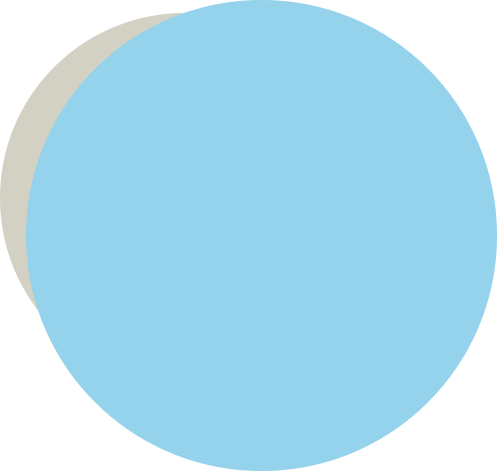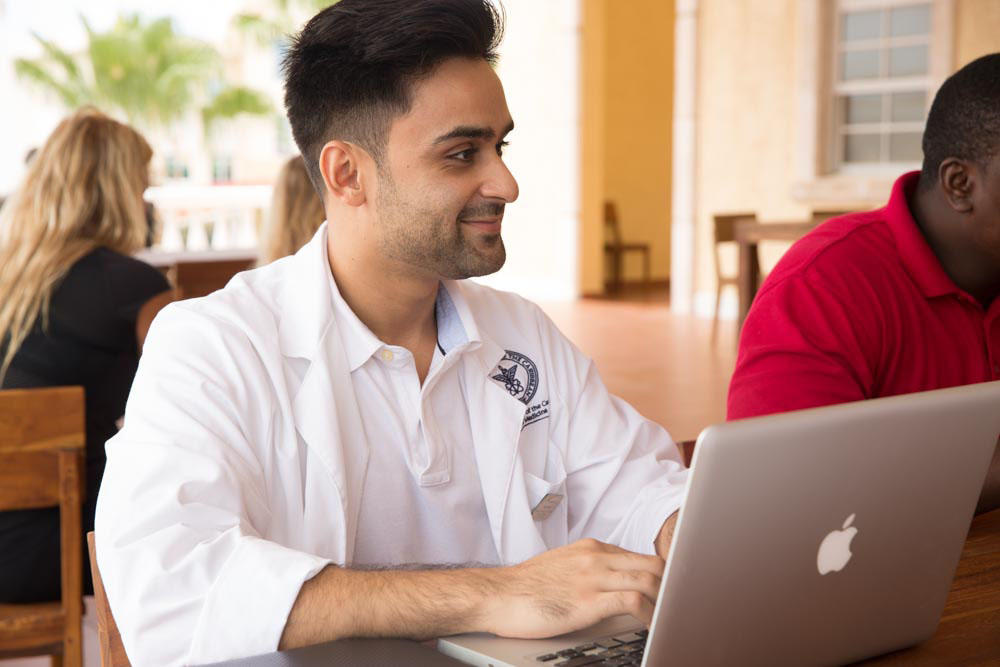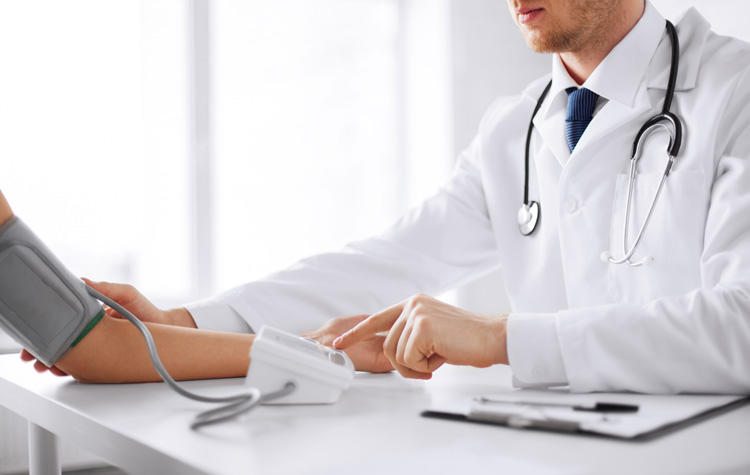Students interested in a career as a physician know that getting into medical school in the United States is quite difficult, and that many excellent students are turned away. With a little extra determination, however, some turned away students may still gain entry. They just need to set their sights a little lower—to the south, that is, among the sunny islands of the Caribbean Sea.
Properly accredited medical schools in the Caribbean—such as the American University of the Caribbean School of Medicine (AUC)*—are often a little easier to get into,
providing a second chance to students who may have missed the cut in the United States. Here are five reasons why going to med school in the Caribbean—particularly AUC—may be the best option for good students determined to practice medicine.
NUMBER ONE: A GOOD EDUCATION
The reason students go to medical school is to get a good education that prepares them for medical residency and licensure and a career as a physician. You might be thinking —but why go to med school in the Caribbean? Several accredited Caribbean medical schools provide a good education, and AUC, located in Sint Maarten, the Dutch side of the island of Saint Martin, is one of the best. AUC meets the standards set by the Liaison Committee on Medical Education (LCME), the accreditation authority for medical schools in the United States and Canada that provide Doctor of Medicine (MD) degrees.
AUC students enjoy many of the same advantages as medical students in the United States. They may qualify for federal student loans through the U.S. Department of Education. They may register with the Educational Commission for Foreign Medical Graduates ® (ECFMG ®) to begin the United States Medical Licensing Examination ® (USMLE®) process. And AUC graduates may also move on to medical residencies accredited by the Accreditation Council for Graduate Medical Education (ACGME), the residency authority in the United States and Canada.
At the end of the first two years of medical school, students take the USMLE Step 1, also known as “The Boards”—the first official test of the medical licensure process. A medical school may measure its educational program by the success of its students on this first USMLE exam (there are two later tests before licensure), and AUC students do exceptionally well.
In 2019, the percentage of AUC students who passed the initial step of the USMLE on the first attempt (94 percent) was far higher than the average percentage for students from other non-U.S. or Canadian schools (78 percent) and nearly on par with the success rate of students enrolled in U.S. and Canadian medical schools (96 percent).
Another measure of a good medical education is the percentage of students who go on to a medical residency. When applying to med school in the Caribbean, it is important to look at their residency placement. AUC has a strong history of placing graduating students in internal medicine or specialty residencies. In 2020, 91 percent of AUC graduates earned residencies throughout the United States and Canada.
NUMBER TWO: SUPPORT AND RESEARCH
Going to medical school is not easy, and students may need academic or clinical training support, as well as help with emotional, social, or physical and mental health issues. Whether they are applying to Caribbean medical schools or American med schools, students may also need help with housing, balancing family and school obligations, or managing financial aid and residency matches.
Student support at AUC—and some welcome diversion—may come from extracurricular activities and clubs and organizations. As a student going to med school in the Caribbean, groups may explore Sint Maarten and participate in diving, soccer, or other local activities on the island. There are also organizations specifically for Asian, Black, Canadian, Christian, Jewish, Latino, and Muslim students. Special interest and teaching assistant groups cover such topics as anatomy, cardiology, global health, neurology, obstetrics and gynecology, oncology, pathology, pediatrics, psychiatry, radiology, and surgery, as well as disaster, emergency, family, and sports medicine.
There is an Honor and Service Society at AUC that rewards academic excellence and community involvement, and a Student Judiciary Committee (SJC) that settles student disputes or professional or ethical issues related to the AUC Honor Code. And when students are ready, the Office of Student and Professional Development (OSPD) helps prepare them for residency—the main goal for students after graduation. The American Medical Student Association (AMSA) and the American Medical Women's Association (AMWA) help educate and inform AUC students and connect them with other medical students and professionals around the world.
At AUC, students heighten their appreciation of the scientific process—and fatten the all-important Medical School Performance Evaluation (MSPE) for residency—through research opportunities in such fields as anatomy, genetics, microbiology, and pathology. Research missions take place locally in Sint Maarten, but they may also take place on other Caribbean islands or in mainland Central, North, or South America. Every year, AUC students publish work or present research studies and findings at conferences and meetings around the world. Another great point for prospective students as to why go to med school in the Caribbean.
NUMBER THREE: CLINICAL TRAINING OPPORTUNITIES
The last two years of medical school usually include the clerkship, or the clinical portion of the training. Most clinical training takes place in teaching hospitals. It provides supervised experience working with patients and gives students an idea of which medical specialty appeals to them most. During clinical rotations, students are part of a medical team, led by an attending physician, that includes residents (doctors-in-training) and interns (first-year residents).
Another reason as to why go to med school in the Caribbean? For AUC students, clinical training takes place at hospitals with accredited residency programs in the United States or in the United Kingdom. The 17 AUC-affiliated hospital programs spread throughout the United States are ACGME- or LCME-approved. Students preparing for a global health career may also do parts of their rotations in the Dominican Republic, India, Uganda, Vietnam, or Zimbabwe.
AUC’s Office of Undergraduate Medical Education Student Services provide advice and support to students during the critical clinical rotations as well as during the residency application and matching process.
NUMBER FOUR: GETTING IN
One of the great advantages of Caribbean medical schools is that they offer opportunities to study medicine to a larger percentage of applicants. This does not mean AUC is “easy” to get into.
The reason why Caribbean medical schools seem easier to get into is because their higher acceptance rate is produced by smaller application pools for larger numbers of seats, as well as more holistic approaches to admissions. Holistic admission considers an applicant as a whole person rather than a mere set of grades and scores.
A holistic approach does not discount grades and test scores, but it does allow for more leniency in academic performance. Students who may have missed the cut on U.S. medical schools—where matriculants have a mean undergraduate grade point average (GPA) of 3.73 (out of 4.0) and an average Medical College Admission Test (MCAT) score of 511.5—may have a chance at a Caribbean school where the student averages are slightly lower.
NUMBER FIVE: THE BEAUTY OF ISLAND EDUCATION
Students must concentrate on their medical studies, of course, but they also need restful downtime and opportunities to do something enjoyable away from classrooms and textbooks. If you are contemplating as to why go to med school in the Caribbean, you may want to take into account the stunning environment. The beautiful Caribbean island of St. Martin offers many enjoyable things to do, and a tropical climate to do them in.
Students will see right away what awaits them on the island as their airplane passes over palm trees and the white sands of Maho Beach before landing at Princess Juliana International Airport. The island’s lovely beaches fade inland to small villages and winding roads in the verdant central mountain range. Student excursions may include diving, golfing, hiking, sailing, and other activities, as well as exploring the many local markets and duty-free shopping opportunities.
St. Martin is divided between the French northern half—Saint-Martin—and the Dutch southern half—Sint Maarten, the home of AUC—but the vibrant island has strong elements of African and American culture too, and English is the common language. Whether it is called plage or strand, however, a beach is a beach, and an afternoon swimming and sunning helps relieve medical school stress.
The American University of the Caribbean School of Medicine trains tomorrow’s physicians, whose service to their communities and their patients is enhanced by international learning experiences, a diverse learning community, and an emphasis on social accountability and engagement. Take the next step toward becoming a physician: apply for admission to AUC.
Related resources:
- AUC School of Medicine Accreditation
- AUC School of Medicine Statistics
- Clinical Rotations in the US & UK
- Why Go to Med School in the Caribbean?
- About Sint Maarten
**AUC is accredited through 2021 by the Accreditation Commission on Colleges of Medicine (ACCM), which is the accreditor used by the country of St. Maarten.
The United States Department of Education, via the National Committee on Foreign Medical Education and Accreditation (NCFMEA), reviews the standards that countries use to accredit medical schools. The NCFMEA has determined that the ACCM’s accreditation standards are comparable to those set by the Liaison Committee on Medical Education (LCME), which accredits medical education programs in the United States.




